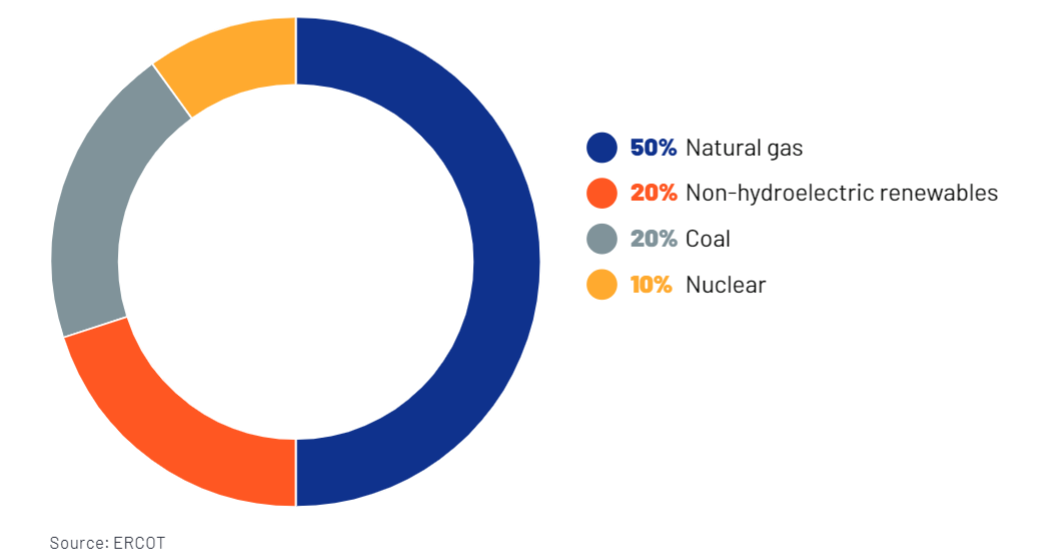Texas is the largest energy producing and consuming state in the US. It is also one of the largest producers of oil, coal, natural gas, wind energy and electricity in the country. The state’s electrical grid is unique in several ways: it is the country’s only grid independent of Federal Energy Regulatory Commission (FERC) oversight, and it has an energy-only market, as opposed to other states, which have forward capacity market. Owing to this, consumers in Texas can freely choose their utilities based on the quality and price of services offered.
Texas has a high dependence on natural gas for meeting its electricity demand. However, it has a fairly balanced power generation mix compared with other large US states, such as Florida, which generates c.70% of its electricity from natural gas. Texas leads the country’s wind production, accounting for 28% of the total wind-powered electricity in the US. It also leads in terms of electricity generation among US states, producing almost twice as much electricity as the second-highest electricity producer, Florida.
Key Takeaways
- The debate that brewed in the aftermath of the Texas freeze has now been settled, with the primary cause ascertained to be disruption in the fossil fuel generation capacity and not a decrease in renewable energy output, as had been initially speculated
- The lack of investments to weatherproof equipment and the supply chain, including wellheads, pipelines, wind turbines and nuclear plant cooling systems, played a key role in the electrical grid failure
- The crisis highlighted utilities’ lack of weatherisation vigour and the underlying cascading effect that deregulated market pricing can have during a severe scarcity situation
- In July 2021, Electric Reliability Council of Texas (ERCOT) formulated a 60-item roadmap to improve grid operations and resiliency. The key features of the roadmap include initiatives to improve weatherisation and reserve margins and address transmission limitations
- Texas is betting on battery storage systems to improve grid resiliency and flexibility and is expected to have almost twice the battery storage capacity by end-2022 compared with end-2020
- Green hydrogen could also be part of the solution to reduce fossil fuel dependence, as Texas already houses key hydrogen infrastructure, such as production capacity, dedicated hydrogen pipelines and hydrogen storage fields
